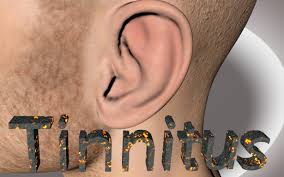Muscle weakness is often not a condition by itself, but it is an indication of another underlying disorder. Most of us are however not clear about or aware of what muscle weakness is all about and how it can be identified. The first clue to an underlying muscle weakness is that you will not be able to derive the desired muscular movement although you apply the required force – say, while lifting your arms or even standing up. When regular muscle movements become painfully slow and laboured, then it’s time to check with your expert Ayurveda doctor to be sure that nothing is wrong. Very often I see in my Ayurveda hospital that patients do not notice muscle weakness as a symptom as an initial indicator of an underlying problem and seek help only at later stages. So here is a quick detail about what muscle weakness is all about and how it can be managed. I am not discussing specific conditions that cause muscle weakness here. I will address each individual condition in my other posts.
Muscle weakness – associated with other conditions
Sometimes muscle weakness can just be the result of a prolonged bed-ridden condition where the entire body is immobile. Alternatively, it can also be a symptom of conditions such as myasthenia gravis, polymyositis, hypotonia, stroke, neuralgia, adrenal insufficiency, sciatica, etc.
Symptoms
Of course, the common indicator is severe muscle pain when you attempt to move. Difficulty in moving around and performing routine tasks, muscular cramps and spasms, tendency to fall, stiffness and burning sensation in specific regions, muscle twitching, and related symptoms. These symptoms will also be associated with other pointers such as fatigue, diarrhea, vision issues, headaches, numbness in the limbs, etc.
Treatment options
One of the most critical steps before proceeding with just managing your muscle weakness s to go to a trusted Ayurveda doctor to understand what the weakness is due to. An expert Ayurveda doctor will do a thorough assessment and then determine why you have this condition. Hence, in addition to helping you overcoming your weakness, your Ayurveda doctor will also help you resolve the underlying condition.
All approaches to managing muscle weakness aims at improving the quality of your daily routines and in enabling the growth and health of muscles. Your Ayurveda doctor will often provide you a healthy mix of some of the following treatments so you recover well.
- Panchakarma – if your body is strong enough to withstand the procedural requirements of panchakarma treatment, this detoxification therapy is indeed ideal for removing toxins from the muscle tissues and enabling circulation. This increases nutrition to the muscles and helps in strengthening the muscles.
- Abhyangam also helps in strengthening the muscles by improving circulation to the massaged region. In addition, the massage movements also stimulate the target muscles.
- Kizhis such as navarakizhi deliver focused treatment options where you are aware of the specific muscle group that is weak. The herbal formulation will also deliver its specific action in addition to the effect of the fomentation.
Other treatments such as swedana and vastis also are effective in enabling muscle tissues and overcoming weakness. The common goal of most of these procedure is to eliminate toxins that accumulate in the body, regain the balance of the three rogas, and nourish the muscle tissues to grow and overcome the source of the weakness. They also reduce pain by minimizing muscular stress
Other approaches
A common treatment approach includes supplementing these procedures with recommendations of lifestyle changes. This includes adding yoga and exercise to your daily routines and following a sensible diet plan that retains the balance of the three rogas.
Managing and overcoming muscle weakness first involves determining the root cause of this symptom. This needs the support of an Ayurveda doctor. Then always follow what the Ayurveda doctor recommends as a customized treatment plan to treat and manage the symptom of muscle weakness.
Contact me for any questions you have about muscle weakness. You can connect with me at http://www.miayurveda.org/ or call me at +91-9444615161.
Credits to http://ayush.gov.in/










